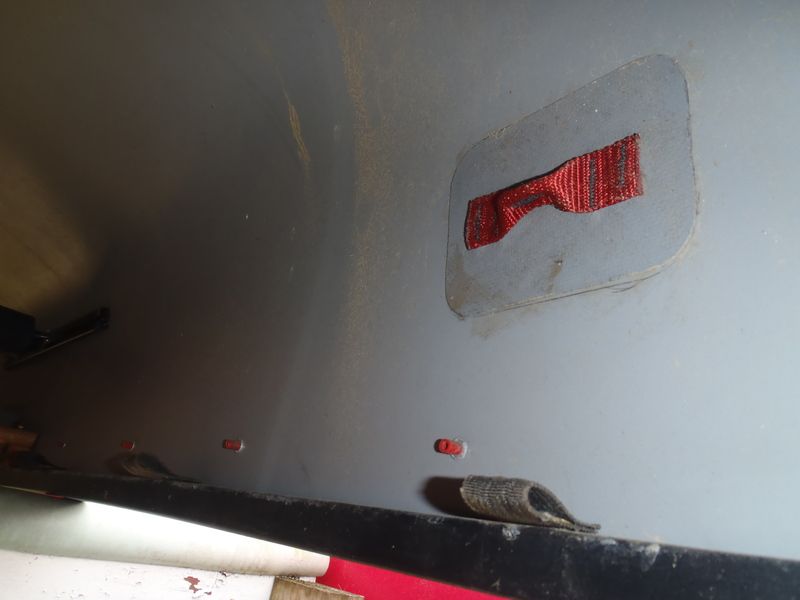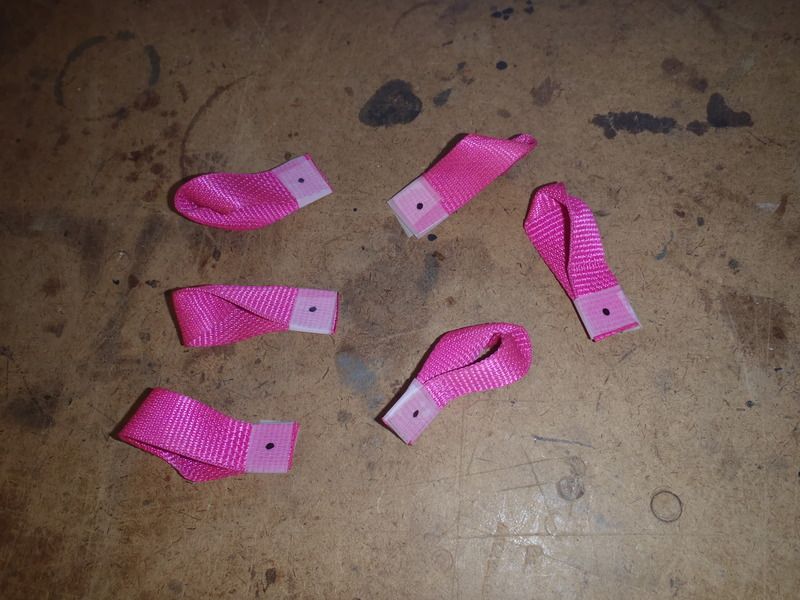Canotrouge's idea of a daisy chained string is very clever. However, I wouldn't trust myself to do the mini-patches of Kevlar. That would require some sort of fancy tools, such as a mixing stick, and I can't even put peanut butter on bread without dribbling it.
Glenn, Chunky is less dribbly, especially in summer temps.
I would suggest using G/flex, small lengths of one inch s-glass tape and some peel ply. I’ll send you a mixing stick, plastic cocktail cup and tiny paintbrushes, but no way am I drilling dozens of questionable holes in a carbon inwale.
To create bag cage attachments, I could probably use the device I used on most of my early canoes with wooden gunwales, the simple eye screw:
dang Glenn, I’m glad to see you finally started drinking again. You may already want to cut back just a touch.
Sue Burgess set technical innovation standards when she used a hundred empty plastic bottles stuffed in a net bag, affixed in the ends of the canoe.
There is that solution. I guess if you can find a triangular mesh bag you could save up your Diet Dr. Pepper bottles. Apparently the aesthetically pleasing part of floatation has been discontinued from consideration.
My father preferred sheets of Styrofoam glued together, cut to shape and covered in latex paint. Those panels of blue insulation foam are still cheap at Home Depot, and you can carve them to size with a rusty Mora knife. Now
that is aesthetically pleasing. And squeaky.
How about this, a series of these, glued under the inwale to be float bag caged or gear webbing strapped at your desired locations. I really don’t need a webbing loop every freaking 2 inches as with the daisy chain anchors. I think I could get away with one loop every six or eight inches.
http://northwater.com/collections/d-rings-anchor-rings/products/1-inch-lightweight-no-d-ring-anchor
Maybe glued in every ten or twelve inches. Run a length of of cord through the webbing anchors on each side under gunwale, and use cage line or gear straps across the hull? The webbing anchor + linear line would double your potential lacing or tie down locations under the inwale (with no drilled holes).
I have used those webbing anchor pads in some canoe applications; they work well and avoid the fugly plastic or SS D-ring.

This may be a silly question. I haven’t bought a new canoe in years, but is there a
warranty period on a newly sold canoe? Is it voided if you drill a crapload of holes in the gunwales or hull?


